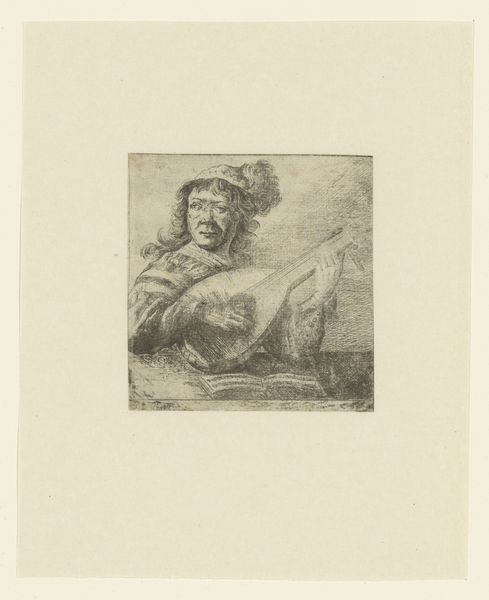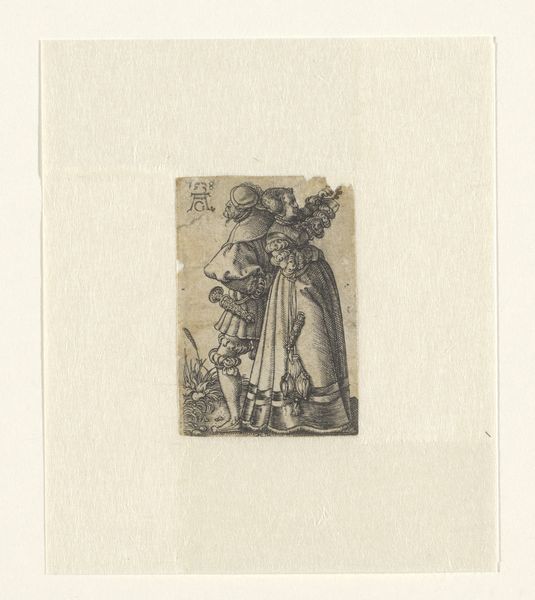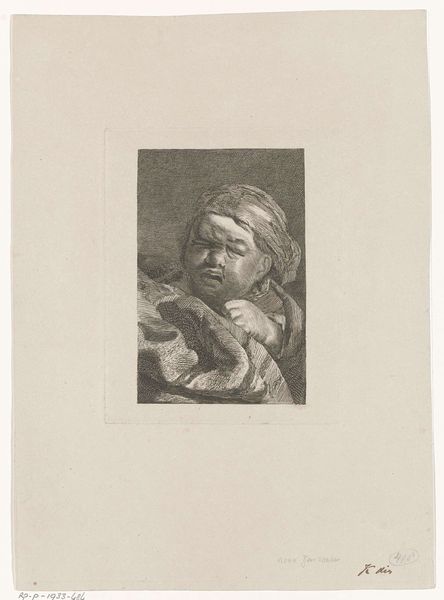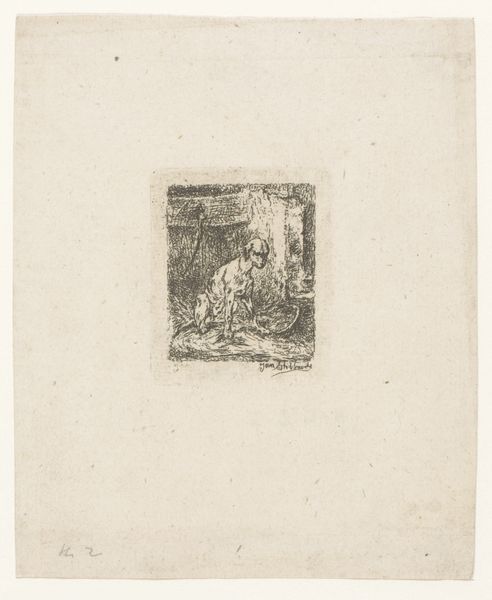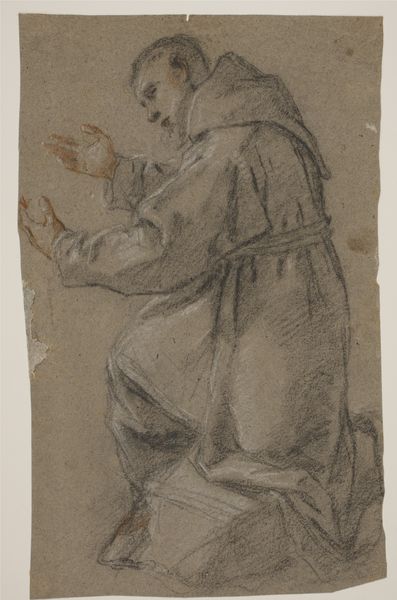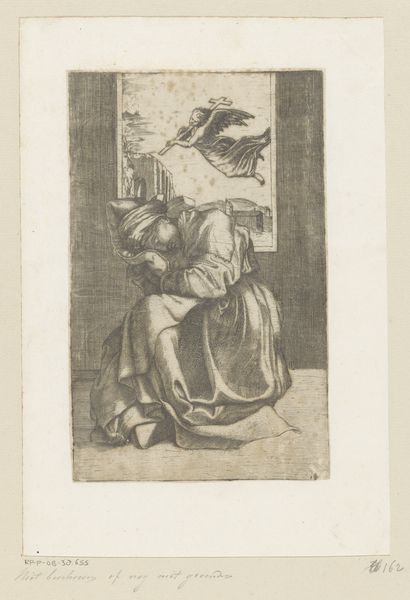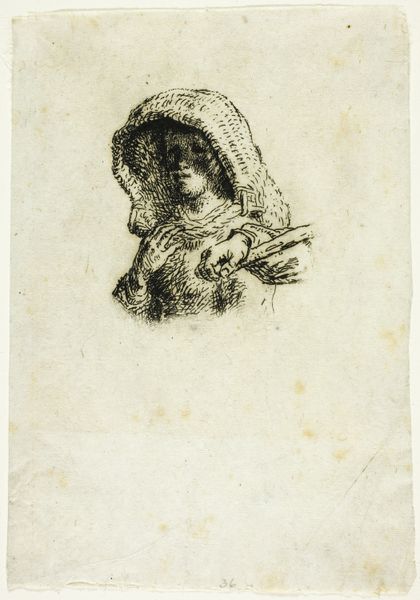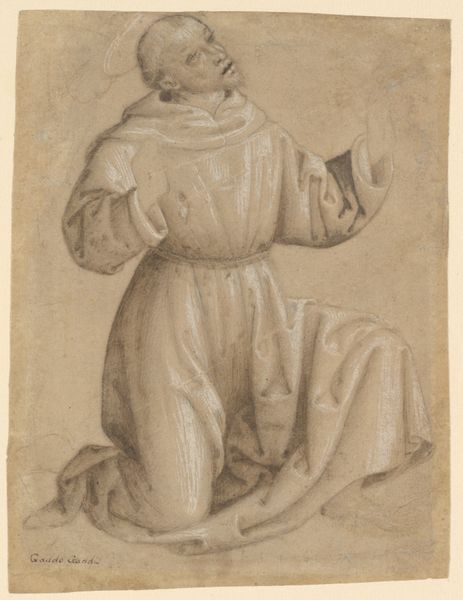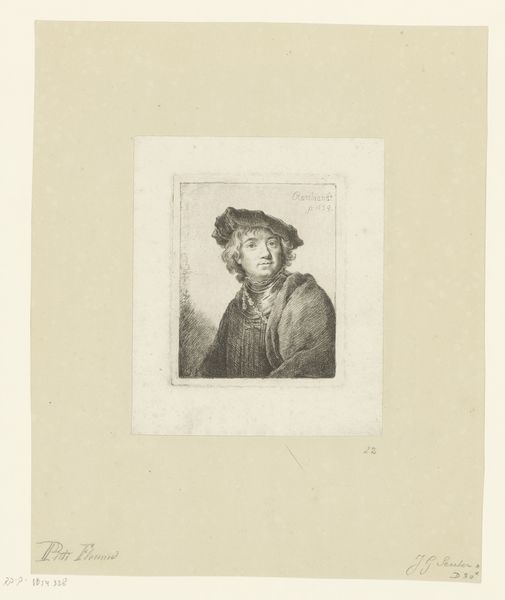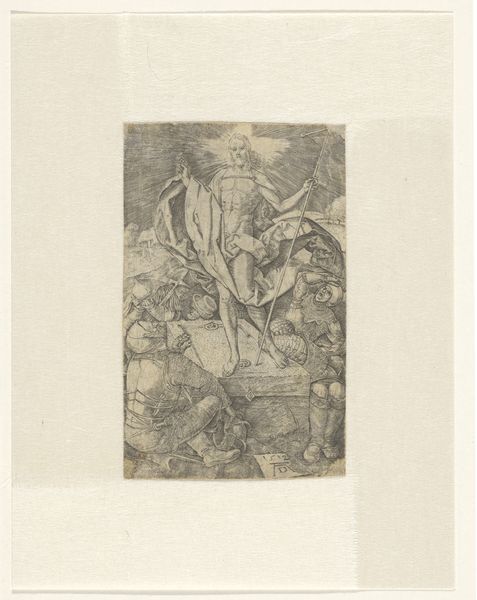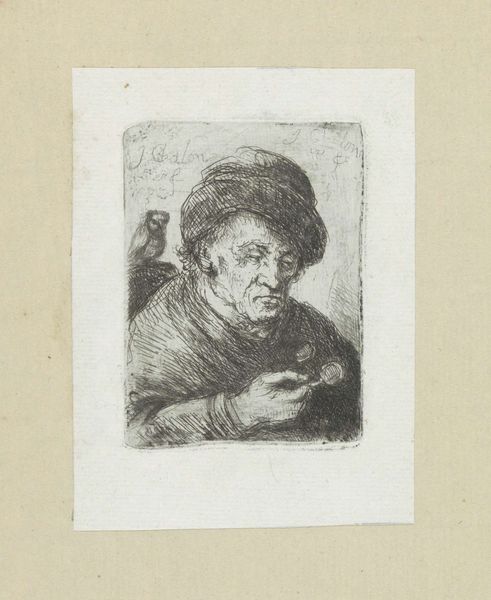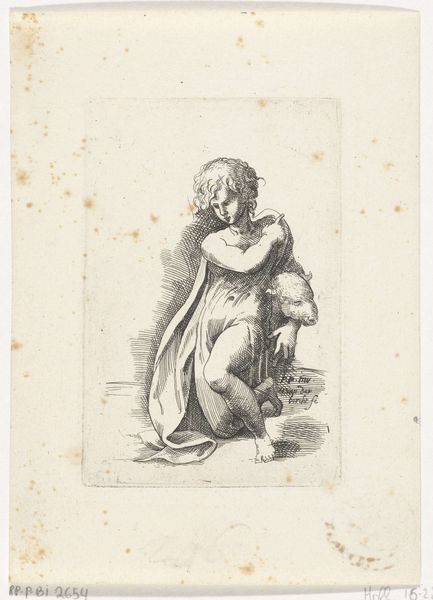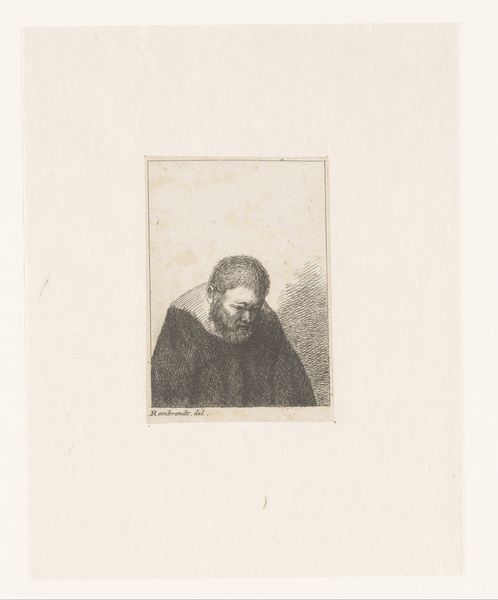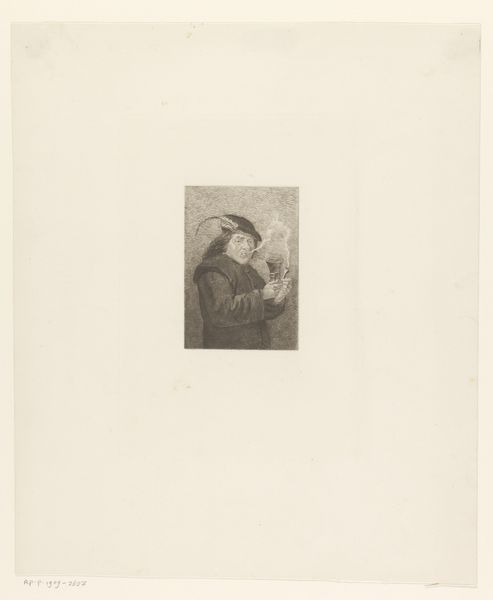
print, etching
#
portrait
#
baroque
# print
#
etching
#
old engraving style
#
personal sketchbook
#
sketchbook drawing
#
genre-painting
#
realism
Dimensions: height 87 mm, width 76 mm
Copyright: Rijks Museum: Open Domain
Curator: Looking at this etching titled "Man Stopt Zijn Pijp"—Man Stopping His Pipe—created sometime between 1622 and 1688 by an anonymous artist, it evokes a surprisingly intimate feeling. Editor: Yes, I’m immediately struck by the somber, almost melancholic mood, despite the mundane subject. The detail in the face, particularly around the eyes, hints at a deeper story beyond the simple act of preparing a pipe. Curator: Indeed. Consider how the composition funnels our gaze. The artist utilizes line work and hatching to great effect, leading the eye from the background figure toward the seated man's hands, actively engaged in preparing his pipe. The tonal range achieved with such limited means is masterful. Editor: I wonder about the context of its creation. Genre paintings like these often offered commentary on daily life. Could this be a reflection on the increasing popularity of tobacco, its effects on society, or perhaps the individual’s attempt to find solace in a common ritual? It also says a lot about art consumption to depict the lower class as primary consumers and viewers of art at the time. Curator: Your point highlights the socio-cultural dimensions admirably. On closer examination, notice how the artist handles light and shadow to emphasize the texture of the man’s fur hat and simple clothes, adding a sense of realism. It contrasts interestingly with the flatness of the background. It seems to denote that class is not the entire identity of a man but simply his immediate context. Editor: Absolutely. And that hat with a feather seems an exception to his overall plainness. Such detail is likely very telling of the socioeconomic strata this man exists in, considering even just 100 years before this he might be considered of much lower stature. Curator: Yes. So much implied about labor, leisure, and burgeoning global trade. Editor: In viewing a work like this, we get a tiny peek into a very big change that occurred throughout society in Early Modern Europe. Curator: It's a deceptively complex piece, brimming with subtle nuances. It presents the challenge to go beyond surface impressions to ask not just what but why. Editor: Precisely! This relatively minor print manages to become a historical key, that prompts me to see art’s profound effect.
Comments
No comments
Be the first to comment and join the conversation on the ultimate creative platform.
